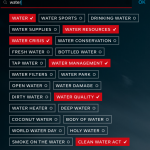EHS and Sustainability Software: Just say no to on-premises deployments
I recently reviewed an article published by Bessemer Venture Partners in 2012 titled “Bessemer’s Top 10 Laws of Cloud Computing”. I wanted to check how accurate their predictions on the Cloud computing were four years later. It is amazing how well they predicted market trends and how the 10 Laws of Cloud Computing still hold today. Nowhere is this more important than in my industry of environmental, health, and safety and sustainability software that is still struggling with a definition of cloud computing and hoping that their legacy system somehow will help them deal with avalanches of data stemming from EHS compliance and sustainability management activities. They will not. I repeat here an introductory paragraph from the original 10 Laws of Cloud Computing. The whole article can be viewed or downloaded from here.
“Although this is finally becoming more widely accepted as a best practice, we must still emphasize the importance of building a single instance, multi-tenant product, with a single version of code in production. “Just say no!” to on-premises deployments. Multi-instance, single tenant offerings should only apply to legacy software companies moving to a dedicated hosting model because they don’t have the luxury of an architectural redesign. Of course it is possible to use virtualization to provide multiple instances, but this hybrid strategy will make your engineering team much more expensive and much less nimble.”
“A large part of the momentum around Cloud Computing today is because IT departments now realize they can avoid many of (these) implementation headaches and functionality shortcomings, and instead get the best of both worlds by working with best-of-breed vendors. Cloud Computing provides the opportunity to leverage best-of-breed application offerings, with the standardization and pre-integration of many of the applications and APIs. You can pick the world’s best application for every need, every user, and every business case. You can deploy exactly the number of seats you need, where and when you need them.”



